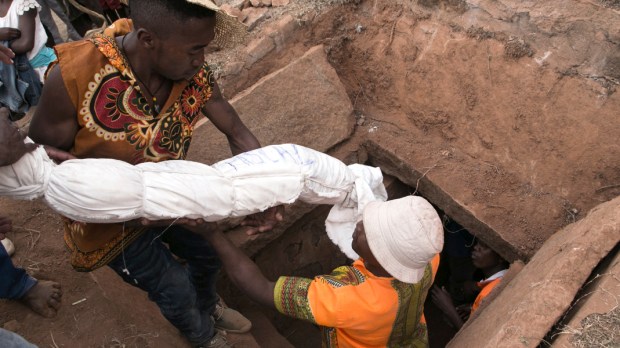Lenten Campaign 2025
This content is free of charge, as are all our articles.
Support us with a donation that is tax-deductible and enable us to continue to reach millions of readers.
Removing dead bodies from the grave and dancing with them. Sounds like a Halloween movie or something?
Well no, actually, it’s a real practice in contemporary Madagascar.
Although it’s a centuries-old tradition in the east African island nation, officials fear it could be contributing to the spread of the pneumonic plague that is now afflicting Madagascar.
Known locally as famadihana, the practice is also known as “the turning of the bones” or “body turning.” According to Time magazine, it involves families exhuming the bones of deceased relatives, rewrapping them with fresh cloth, and dancing with the wrapped corpses before returning the remains to their graves.
The ritual, considered sacred by the island’s Malagasy people, occurs every five to seven years. Family members removed their deceased relatives from an ancestral crypt, peel away the burial garments, and wrap them in fresh silk shrouds. Then guests drink, converse, and dance with their forebears.
“We wrap the bodies and dance with the corpses while they decompose,” anthropologist Miora Mamphionona, told CNN earlier this year. The network explained that the Malagasy believe their ancestors serve as intermediaries between God and the living and therefore have the power to intervene in events on earth. They believe that the dead do not move on to the next life immediately but remain in the land of the living until their bodies have completely decomposed.
Just before the sun sets, the bodies are carefully returned to the tomb and turned upside down. “The bones are returned to the tomb before sunset because the sun is the source of our energy,” Mamphionona said.
But now, the dead bodies may be the source of more death.
“If a person dies of pneumonic plague and is then interred in a tomb that is subsequently opened for a famadihana, the bacteria can still be transmitted and contaminate whoever handles the body,” Willy Randriamarotia, the chief of staff in Madagascar’s health ministry, told the French news agency AFP.
Plague is not uncommon in Madagascar, particularly between September and April. But this year, there have been 1,192 cases since August, with 124 people succumbing to the disease, according to an update issued on Monday by the U.N.’s humanitarian affairs office and the government of Madagascar. Two-thirds of the cases identified have been of pneumonic plague—the most virulent form of the disease, Time reported. It can be spread from person to person through airborne droplets, spread by coughing or sneezing. Pneumonic plague can kill patients within 12 to 24 hours, meaning that immediate diagnosis and health treatment is crucial.
And now, to limit the possibility of the disease spreading through famadihana, Madagascar is requiring that plague victims be buried in anonymous mausoleums, not in tombs that can be reopened.

